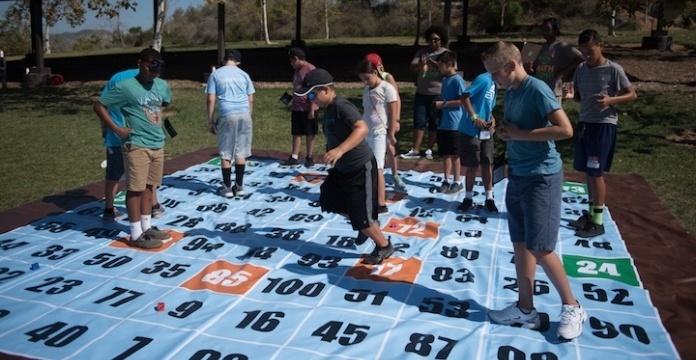
Why do educators try to use games for learning, especially with math content? Is it just to make learning fun? This is an important question; we see the difference in achievement when students are engaged and participating. So making learning fun is a big part of our goal.
However, I’ve discovered that the best kind of game-based math learning will actually boost students’—and teachers’—ability to reason, understand underlying concepts and find solutions to complex math problems.
These are some thoughts I’ve collected from my 13 years of experience with game-based math learning. But this is just a jumping-off point.
The goal for educators is to continue finding and facilitating the kind of instructional activities that help students understand the concepts behind the math problems—games that motivate them to find creative solutions and take an active part in accelerating their own learning. Imagine if this could happen while they’re having fun!
Here are some reasons to work toward creating transformative game-based learning opportunities:
One of the main benefits of playing math games is in the amount of retention it creates. A lot of teachers use basic forms of TPR (Total Physical Response) like moving your arms or waving hands to help with learning, but many forget that getting kids all the way up and active sparks a connection in the neurons of the brain to help with processing and retention of new information.
A game called Hop to It has been one of my favorite tools for my kids struggling with basic number sense, and it also actively challenges my advanced-level students. They have to move to the corresponding numbers related to a set question and be aware of how they physically move to get there, such as on one foot or with their left hand.
The physical connection to what the brain needs to know to make the number decision is instant and long lasting, while the laughter and discussions they have well after game time ends also create a lingering learning effect that lends to all student levels feeling equal and challenged to complete the tasks.

It’s fascinating to see this same level of connection happening when my students play the ST Math digital games that I have been using to supplement my math program. These games are specifically designed to simulate the trial-and-error, cognitive learning process like the physical games we play.
Many of the teachers I speak with are noticing an increase in the numbers of students who need extra help, as well as a wider gap between the kids who easily understand the math concepts and those who don’t.
Other educators who are noticing this disturbing trend can investigate math games as an effective strategy for closing the gap. Look for the types of games, especially in software games, that are truly personalized to each individual students’ learning path. This way, students can make meaningful gains in learning, without always having to be in groups leveled by ability.
Within the ability-leveled groups, many kids simply shut down when they are repeatedly placed in the low groups; they have little desire to continue to work hard when they feel they are always behind the others in class. Generate a game environment that fosters the constant connections minus the feelings of segregation.

Setting up a game-based learning environment does take organization and planning. It also takes the ability to step back and be able to handle the failures as well as the successes. The learning curve of teachers shouldn’t stop at the doors of, “I understand and can confidently teach this content.” The learning curve needs to be constant and forever developing.
Our students depend on us to continue to strive toward using the best methods for the current population of students while improving on the methods we hold in our toolboxes.
If we are going to ask our students to continue to step out of their comfort level and challenge their personal learning curves, we owe it to them to continue to do the same.
The resounding claim by my students is how much they LOVE the chance to be outside, active and learning all at the same time. It is often forgotten, in the hustle and bustle of meeting all the benchmarks, testing deadlines and chaos of the daily grind in teaching math, that it still has to be fun.
Yes, FUN! We’ve come back full circle to the beginning. Kids respond to learning when engaged, challenged and enjoying their tasks.
The discussions in my classroom have helped mold many changes in mathematic fun and learning and the feedback from my kids was amazing:
I love the games because even though I struggle in math, I feel like I’m just as smart as everyone else. I can learn more when we play.
I would enjoy practicing my math more if it we could play these games all the time.
Game-based learning has been an integral part of student development for years, yet we don't give it the support it deserves for the level of knowledge-growth it creates. Educators can start small and work their way up to an entire day.
Begin the process with introductory lesson starter games and work your way into a full math rotation. You’ll eventually find your comfort with a full day of learning with math games.
It takes time to develop the games that work and eliminate what doesn’t. Give yourself the freedom to try things, have AAR (After Action Reviews) with your students to see how they feel things went, make changes and try again. There is no failure in the attempts to generate a game-based learning environment; the only failure comes from never attempting in the first place.
Give the concept time to mature. Teachers, work together to tweak ideas and find what will work best for you! The process can get daunting, but it’s also a lot of fun – trust me!
Want to know more about the ST Math games mentioned in this post?

Shannon Duncan is a 6th grade math and science teacher at McPherson Magnet School in Orange County, CA.
Comment